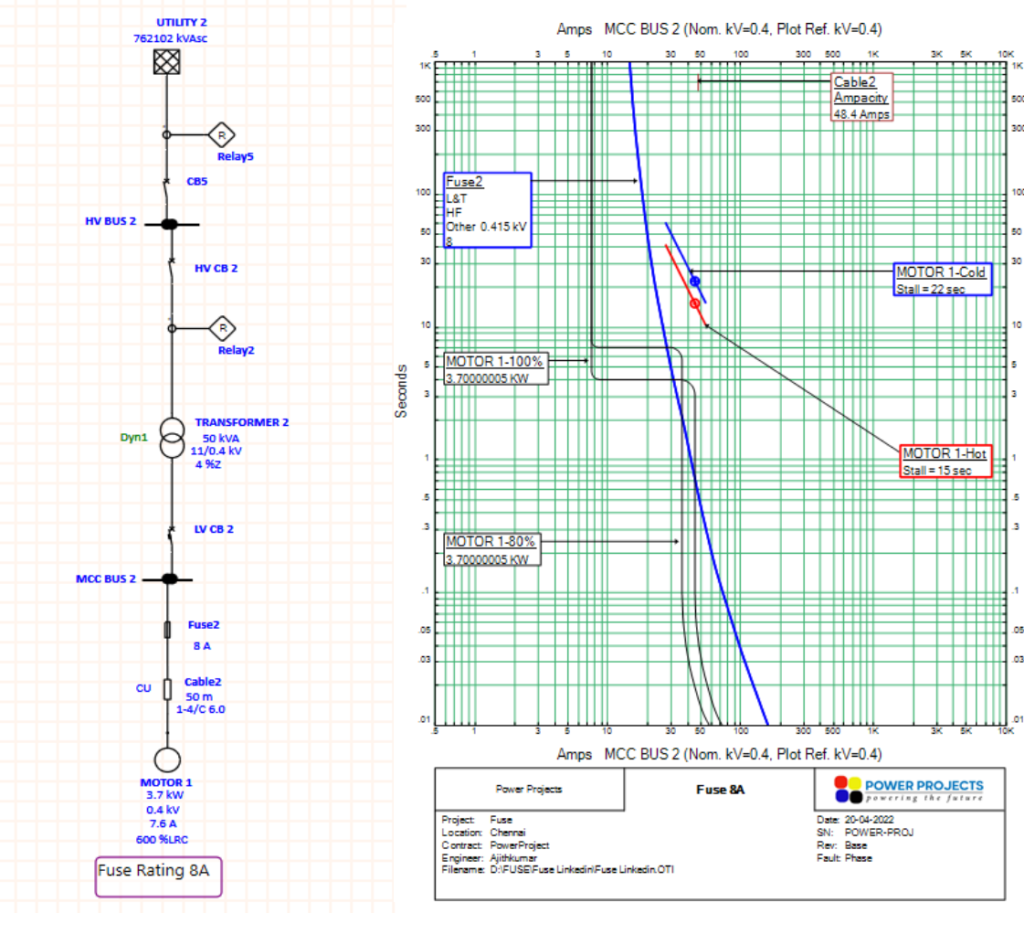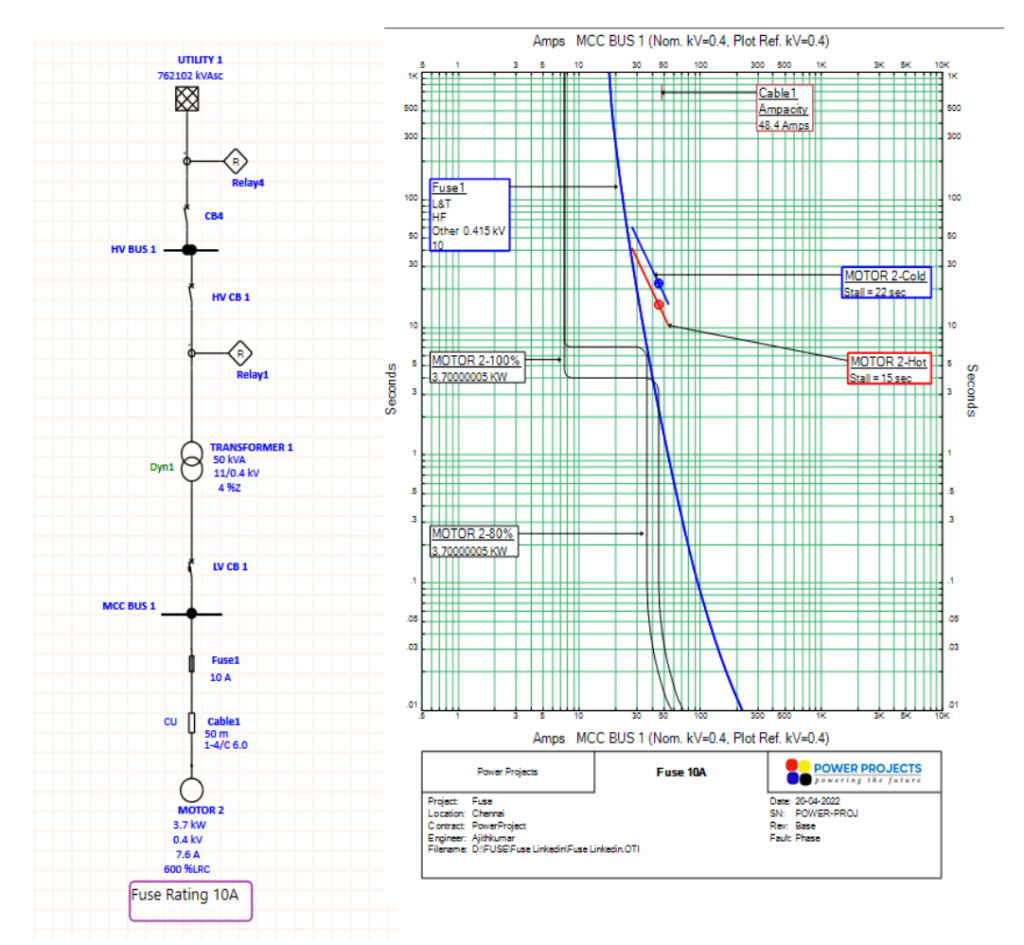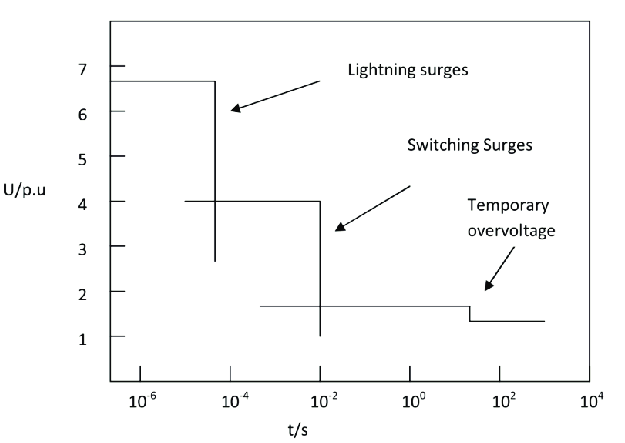Motor protection using fuse
Network consist of 11kV grid through a 50kVA transformer, 3.7 kW motor with Fuse is connected. The motor is rated at 0.415 kV and its full load current is 7.6 A. The motor protection considered for various standard fuse ratings as follows (8A, 10A, and 16A).

Case 1:

Consider a 8A fuse; in this case, the motor’s starting characteristics curve exceeds the fuse’s characteristics curve. As a result, the fuse will not be able to withstand the motor’s Starting Current and it will be impossible to coordinate the motor and the fuse(protection device).
Case 2:

Observation:
Consider an 10A fuse; the motor’s starting characteristics curve exceeds the fuse’s characteristics curve which is similar to Case-1. As a result, the fuse will not be able to withstand the motor’s Starting current and it will be impossible to coordinate the motor and the fuse (protection device).
Case 3:

Consider an 16A fuse; the Fuse’s Characteristics curve is exceeds the motor’s damage curve. As a result, the motor can be easily damaged during a fault because the motor and fuse is not able to coordinate properly.
Conclusion:
From the above cases, we can clearly state that fuse characteristics curve is unable to coordinate properly with motor starting characteristics and motor damage curve. Still, Fuse will be the suitable protection device for low cost motors. Usually, the protection device cost should be less than 25% of the motor cost. So,we should go for fuse protection for low cost motor, which is cost efficient.




No comment